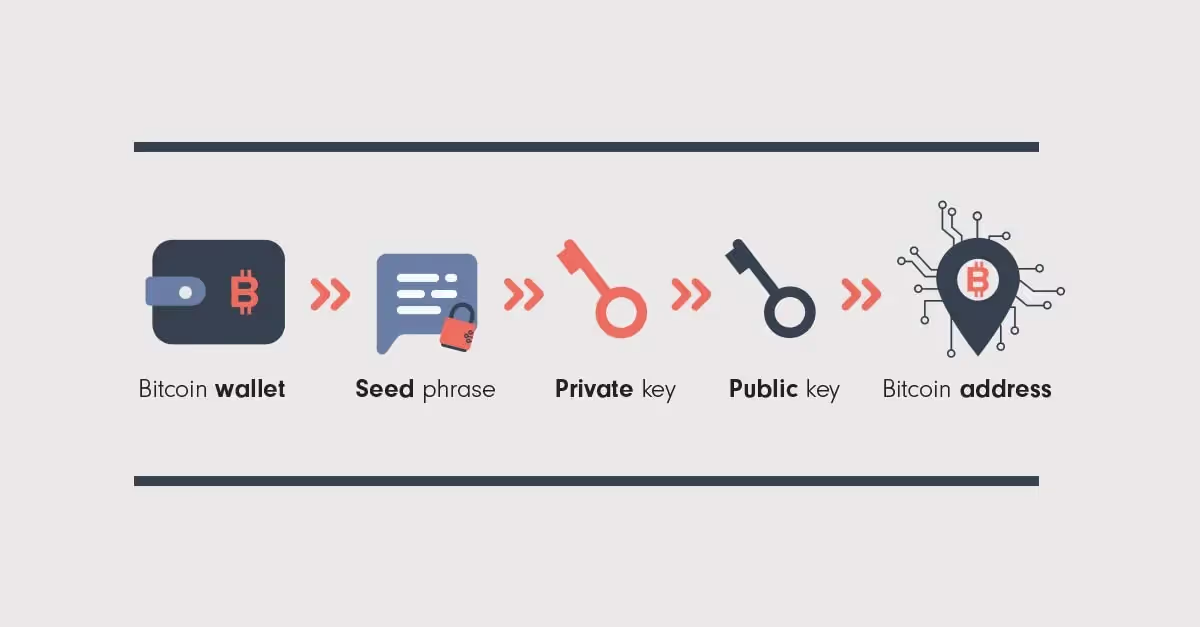
What is a multisig wallet?
Cryptocurrency wallets contain the keys that are used to “sign” transactions, passing an amount of crypto from one user to another.
Some wallets require just one key to sign transactions, while others are set up to require multiple keys.
These are most commonly called multi-signature wallets or multisig wallets, but they can also be referred to as shared wallets or joint wallets.
Crypto wallets: an overview
To understand what multisig wallets are and how they work, let’s first cover the basics of crypto wallets.
A common misunderstanding when it comes to crypto wallets is that the wallets themselves are storage devices for crypto.
In fact, a wallet is simply a tool for unlocking (ie, spending) crypto.
In the case of Bitcoin, for example, your Bitcoin wallet stores your public and private keys.
A wallet can take multiple forms. It may be a piece of software, an app or online platform, or a hardware wallet like a computer hard drive or USB drive.
A wallet could even be a piece of paper that contains key information.
How public and private keys work
In Bitcoin, key pairs are a cryptographic mechanism with a similar function to login credentials in online banking. They give you control over the Bitcoin that is recorded on the blockchain as belonging to you.
In a typical Bitcoin wallet setup, your wallet generates a seed phrase (also known as a recovery phrase), a string of randomly generated words. The seed phrase is used to generate a private key.

The private key in turn generates a public key, which looks like a long string of letters and numbers. Your public key can then generate a shorter address, a bit like a bank account number, that you can use to receive Bitcoin.
With your private key, you can “sign” transactions to transfer the ownership of an amount of your BTC to another party.
Private keys can be used to generate public keys, but not the other way around. This is an important security consideration.
The private key is the mechanism you use to spend your BTC, so if a third party had access to it, they would also have access to your BTC.
Read more: What is public key cryptography?
Single signature vs multisig
Many Bitcoin wallets, especially those created for individual users, are set up to require just a single key to sign for transactions.
However, some use multi-sig technology, requiring at least two private keys to sign a transaction.

A Bitcoin wallet with a "2-of-3" signing arrangement.
Such transactions could require “M-of-N” transactions, where N is the total number of possible signatures and M is the minimum number required to sign it.
For example, in a 4-of-5 multi-sig transaction, where five people hold private keys for a wallet, any four of them must sign the transaction for it to be broadcast to the blockchain.
It is also possible to have an “N-of-N” arrangement, whereby all the private keys are required to sign for a transaction.
Reasons for using multisig wallets
Multisig wallets offer several benefits for crypto users.
No single point of failure
For retail users, a multisig wallet may be useful if two or more people, for example a couple or family, wish to share control of a crypto wallet. If one of the family members were to die, the others would still have access to the funds.
Likewise, if one set of private keys is stolen, they cannot be used in isolation. The other holders of the private keys can then take appropriate steps to secure the funds.
Security
For business and enterprise users, multisig wallets are one of the ways that the company can protect against misuse of funds by a single rogue employee.
There is also more protection against theft or hacking, since a bad actor would need to acquire multiple keys in order to take control of the funds.
Efficiency
In enterprises, a multisig setup means approval bottlenecks are less likely because the responsibility for signing transactions is distributed among multiple team members.
If just a single signature is required, for example that of the CFO, then making a high volume of payments will prove difficult, with a knock-on effect on scalability.
Considerations for enterprise users
Enterprise users of multisig wallets have more complex needs than smaller businesses.
When looking at wallet providers, enterprises should be sure to ask the following key questions:
1. Is there a transparent record of authorizations?
Depending on how a wallet is set up, it may be difficult to identify who in an organzation signed for any given transaction.
The “on chain” data (ie, the information stored on the blockchain) may not in itself be granular enough to meet business intelligence and audit requirements.
2. What levels of security access are there?
In addition to dividing key access between multiple parties within your business, you should consider the acccess control for the system used.
How can you be sure that only the parties with security clearance are making the transactions? Extra security measures should be considered, such as multi-factor authentication and biometrics.
3. Is there operational flexibility?
In other words, can wallet access easily accommodate changes in the team and regular occurrences such as sick leave or maternity leave.
Fortris handles digital asset treasury operations for enterprise business.
Want to learn more? Book a demo today.
